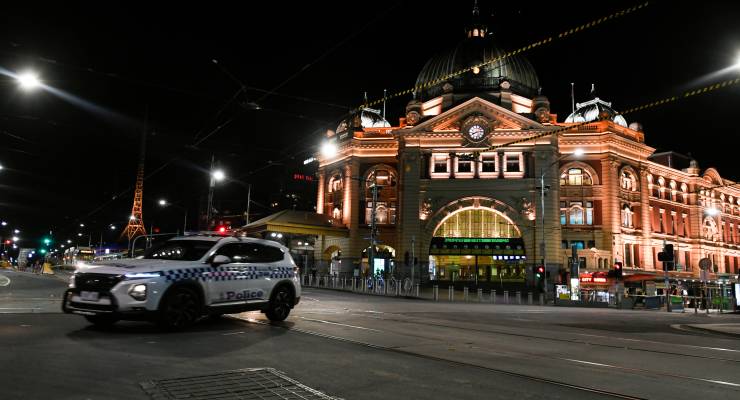
A captain’s call curfew
Victorian Premier Daniel Andrews has said Melbourne’s curfew wasn’t backed by science, but was introduced to make policing the lockdown easier. The curfew, which was recently eased by one hour, limits movement from 9pm until 5am.
Andrews said the curfew helped ensure people weren’t “sneaking around” to their mates’ places. Opposition Leader Michael O’Brien has called for the curfew to be dumped, calling it a “captain’s call” not rooted in health advice.
Victoria recorded 51 cases this morning and seven deaths.
Economy hit hard… but deaths would hit harder
Melbourne’s economy will shrink by almost a quarter, according to modelling that predicts $23 billion and 22,000 jobs will be lost lost in the CBD and inner suburbs this year.
Over five years, this number is expected to stretch to $110 billion and 79,000 jobs compared with pre-pandemic projections.
NSW also faces a $10 billion GST hit, with NSW Premier Gladys Berejiklian saying interstate border closures were making things worse.
There are also fears construction work will fall around the country with industry analysis finding there was a $20 billion slump in major project approvals since the start of the pandemic. In NSW the construction industry will be used to help build the economy out of a recession, though there are concerns work will stall due to a shortfall of contracts.
But without lockdown, things could be worse: New Zealand has expected to save $7.8 million for each year of life saved, with 1000 deaths prevented.
Modelling mayhem
A team at James Cook University has reviewed Australia’s early COVID-19 modelling, saying there was an error which made the effects of the pandemic appear four times worse than intended.
The modelling, which was used to justify Australia’s early lockdowns, suggested that the number of people who would need intensive care beds was overrepresented, predicting that in NSW 12,000 people would need intensive care instead of 3000.
The modelling was provided by the Doherty Institute, which said the errors were confined to two graphs and did not affect the response strategy.
COVID-19 climate
Despite limited flights and fewer cars on the road, greenhouse gas emissions are nearing pre-pandemic levels. During peak lockdown in April, emissions fell by 17%, reverting to 2006 levels. By June, they had started to creep back up, sitting at 5% below 2019 levels.
It’s expected 2020’s emissions will be 7% lower than last year, with temperatures on track to rise beyond 1.5 or 2 degrees leading to worse droughts, stronger storms and extreme sea-level rise.
The world is set to see its warmest five years on record following record summer temperatures.
Vaccine reaction
AstraZeneca and Oxford University’s coronavirus vaccine trial was put on hold on Tuesday after a participant in Britain experienced a life-threatening reaction. Details of the illness were released this morning: the woman developed symptoms consistent with a rare but serious spinal inflammatory disorder.
She is excepted to make a full recovery, and trials are expected to resume next week.








I think that I’ll wait for a few million people to test the rushed to judgement “vaccine” – maybe for a year or three, just to check on side effects.
There’s an old medical axiom – something that doesn’t have a ‘side effect’ is rarely efficacious.
Michael O’Brien, the invisible man, seems to have an answer for everything – funny that is always completely contrary to the advice of the current government. Irresponsible Victorians have shown they can’t be trusted when it comes to the rules in place, so a curfew is a necessity to aid in policing the rules.